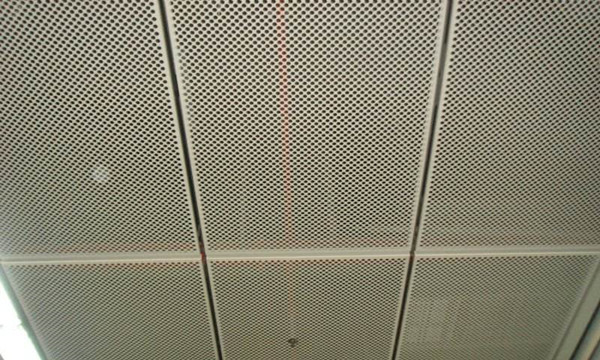Acoustic Properties of Perforated Metal Panels
Source:www.cn-psp.cnAuthor:河北森驰公司 Last updated:2025-06-08 11:44:48 Browse:
Perforated metal panels play a crucial role in sound absorption and noise control due to their unique design and material properties. By carefully engineering the hole size, open area ratio (the ratio of perforated holes to the total panel surface), and panel thickness, perforated metal panels work synergistically with acoustic insulation materials to minimize noise reflection and transmission. Smaller hole sizes and higher open area ratios increase the surface area exposed to sound waves, enhancing their ability to absorb sound, especially at high frequencies.
For instance, in modern architectural and interior designs, perforated metal panels are commonly combined with materials like rock wool or fiberglass to reduce noise levels in spaces such as offices, conference rooms, cinemas, and concert halls.
Sound Diffusion and Echo Control
Besides absorption, perforated metal panels effectively diffuse sound waves due to their perforations and surface treatments. These features help scatter sound waves in multiple directions, reducing their energy and weakening overall sound propagation.
This property is particularly valuable in environments like recording studios, theaters, and lecture halls, where controlling echoes is essential. Through precise design, perforated metal panels disrupt the direct path of sound waves, suppress reflections, improve audio clarity, and create a more natural listening environment.
Airflow Control and Ventilation Performance
A distinctive advantage of perforated metal panels is their ability to allow airflow through the holes while simultaneously reducing noise transmission. Their perforated design facilitates ventilation but limits sound propagation, making them ideal for ventilation systems and equipment enclosures.
For example, when used as ventilation panels in equipment rooms, perforated metal panels ensure effective heat dissipation and air circulation while significantly lowering noise pollution generated by machinery. This technology is especially suited for HVAC units, electrical equipment, and other systems requiring both noise control and heat management.

Structural Support and Aesthetic Value
In addition to acoustic functions, perforated metal panels often serve as structural supports in sound insulation solutions. They provide physical protection and enhance the overall appearance of acoustic treatments. Customizable hole sizes, patterns, and arrangements allow these panels to combine strong functionality with visually appealing designs.
For modern buildings and high-end audio equipment, perforated metal panels frequently become integral elements of the overall design. Their durability and weather resistance also make them suitable for outdoor applications such as outdoor audio equipment and noise-reducing enclosures for transportation vehicles.
Wide Applications Across Industries
The versatility of perforated metal panels enables their widespread use in various industries. In construction, they are employed not only for noise control but also as facade materials, ceiling decorations, and partition walls, enhancing both acoustic performance and architectural aesthetics.
In industrial settings, perforated metal panels are used for noise isolation in electrical equipment, machine rooms, power generation devices, as well as enclosures for hydraulic systems and ventilation ducts. Their high heat resistance and soundproofing capabilities ensure stable operation of equipment and a comfortable working environment.
In summary, perforated metal panels have become indispensable in modern architectural and industrial design due to their excellent acoustic performance and diverse applications. Whether improving sound quality, controlling noise, or contributing to aesthetics and structural support, perforated metal panels demonstrate unique and valuable benefits.
